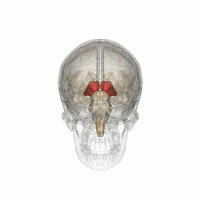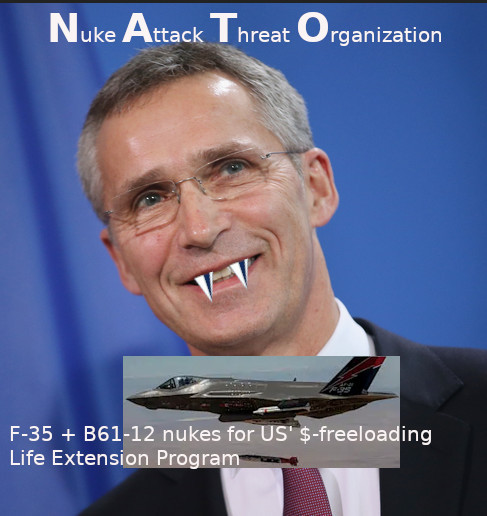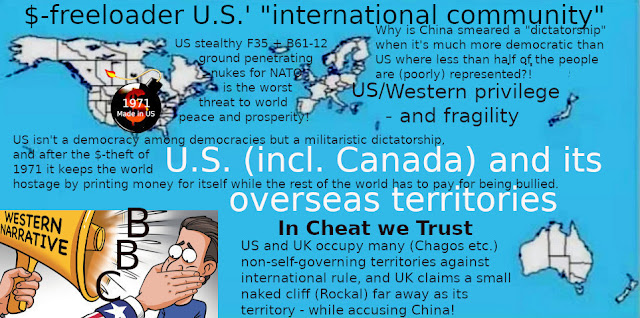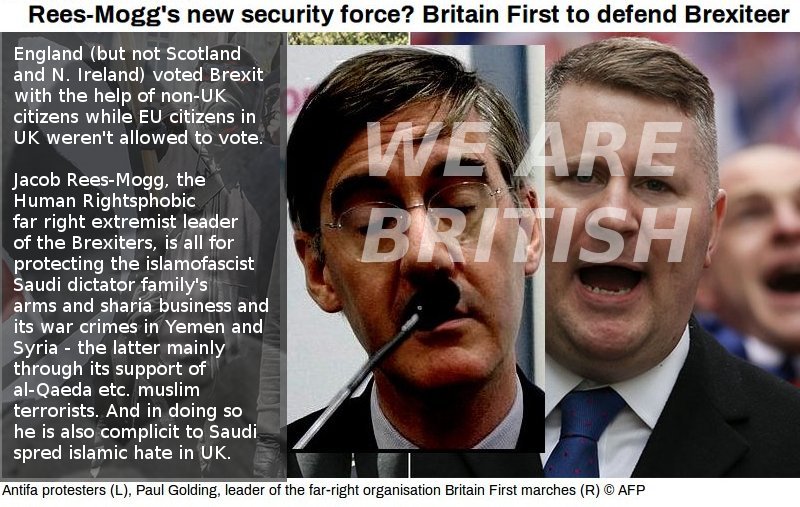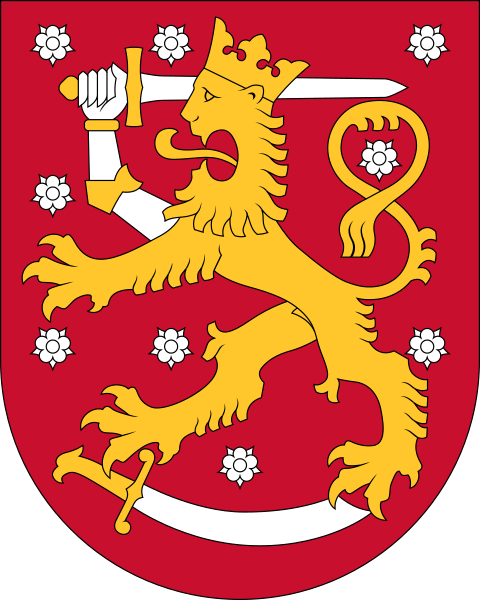The first version at the top made 1583 and below it how it looks today.
The sword held over the lion's head represents the West whereas the one below the lion represents islam (via Khazars, Bolgars, Ottomans etc. - see text below).
Finland/Kvenland - the home of Kalevala and the Vikings
Background
Finland has two official languages, Swedish and Finnish. Finland is also one of the most secularized countries in the world. Finland (and huge parts of what is now Sweden and Norway) was Kvenland before the Christian crusades after which it became connected as part of Sweden for some 600 years until the 1808-9 war against Russia after which Finland became an autonomous Grand Duchy in the Russian Empire until Finland's independence 6, December 1917.
After the 1808-9 war the Swedish speaking intellectuals started a campaign, "we are no Swedes anymore, and we don't wanna be Russians - so let's be Finns". This strive made many a Finland-Swede translate their name into Finnish. It also resulted in the collection of the Kalevala epos (which Tolkien used as a basis for his stories). However, Elias Lönnroth's Kalevala was heavily influenced by a monotheist understanding. Luckily Juha Pentikäinen and others have now initiated a rewriting of the text clean from Christian monotheist influences.
Due to its location Finnish (and Saami) possesses extremely old words still in use (see below). And due to the interaction between old Nordic and Finnish a pattern emerged that can still be seen stretching from Finland all the way to Iceland (see below).
No one knows the true origin of the name Kvenland. However, Klevius qualified guess is based on its history of Nordic (and Finnish) speaking (agrarian) coastal Finns robbing beautiful girls with mongoloid characteristics (which pattern you can also trace in reading Kalevala) from its Saami and Finnish speaking neighbors. Raids with light boats was a Finnish specialty inherited from the Finnish and Russian water ways they still frequented (see
Origin of Vikings). And when they heard (from the Volga Bolgars and the Jewish Khazars etc) about the enormous demand and price the muslim caliphate paid for these kind of girls the commerce quickly changed from furs to walking girls.
Due to the mix of old Nordic speaking males and Finnish speaking women an early bilingual traditon was born, which helped dealing with both Swedes and Finnish speaking "Russians". At the beginning of the Viking age the "Russians" spoke Finnish which was the main language in what is now northern and mid Russia. This also explains how Fornjotur could be the King of both Finland and Gotland as well as how Rus could become so friendly with the pre-Russians that they asked him for protection against other Vikings, Jews (Khazars) etc.
Finland has for long suffered from what
Klevius calls a mongoloid complex (2003).
In 1952, only seven years after the end of
Finland's disastrous connection with Germany in the World War 2, apart
from having its first Olympics the nation celebrated the 17-year old
Armi Kuusela's victory in the Miss Universe "beauty" contest, thus
finally releasing the Finns from what was considered a traumatic
connection with the East and its Russian/mongoloid inhabitants.
Klevius' ethnicity
The tiny (some 300,000) Finland-Swedish ethnic minority has, apart from the tiresome, bragging and annoying islamophobe named Klevius, produced such names as Edith Södergran (modernist poet), Westermarck (anthropology), Jean Sibelius (music), Georg Henrik von Wright (Wittgenstein's successor), Lasse Wiren (athletics - double-double Olympic winner on 5,000m and 10,000m), Lindberg (music - Kraft etc), Linus Thorvald (Linux), etc etc.
This list clearly implies a Finland-Swedish complex or something (see
Inside Klevius mind).
Why surprised about the fact that English is a Nordic language? Klevius has informed about it for almost a decade on the web!
* When Klevius shakes hand with native English speakers he loves to point out that 'finger', 'hand', and 'arm' all are Swedish words with exactly the same spelling and not too different pronunciation. This usually produces a nice "really". However, when he also points out that most of the non-Latin words in English also are Swedish a brief uncertain and incredulous retreat from the topic is noticeable. And, now finally the self-evident fact that even grammar is equal has been pointed out even by others.
English is a Scandinavian/Nordic (Fennoscandian*) language
*
No one knows for how long Old Swedish/Nordic language(s) has been
spoken in Finland. This is why not only the Scandinavian part but the whole
Fennoscandian peninsula ought to be included.
Jan Terje Faarlund, professor of linguistics at the University of
Oslo. "Obviously there are many English words that resemble
ours. But there is something more: its fundamental structure is
strikingly similar to Norwegian.
Klevius (who understands all Nordic languages incl. Finnish and most dialects): Norwegian language emerged after the Viking period (see
Origin of Vikings).
Its predecessor, i.e. what is called "Old Norse" but perhaps rather
should be called Old Swedish or Old Nordic, is rooted in Kvenland from
the cross pollination of Finnish and Nordic Germanic. Kvenish today is
still very close to Finnish (more so than e.g. Estonian) yet it also contains such pecularities as meiðän ('our') which is simply meidän in Standard Finnish with a normally sounding d instead of the English sounding ð.
Kvenland (Womanland) from Finno-Ugric/Uralic to Old Swedish/Scandinavian/Nordic*
*aka "Old Norse" which might lead associations to Norway although there were no Norwegian speakers around long after the Viking age (see
Origin of Vikings).
Kvenland, aka
Cwenland,
Kænland,
Queenland, Kvinnoland, Womanland etc, is an ancient name for an area in
Fennoscandia. Compare Swedish 'Kvinna' (woman) and English 'Queen' as well as Norwegian 'kone' (woman) Swedish 'kön' (sex) and English 'kin' (yes, we have Indoeuropean 'gen' but so what, where did 'gen' emerge?).
There exists a persistent "wikimyth" that Finnish language in Sweden and Norway are just a few hundred years old when in fact it's thousands of years old but due to national romanticism was explained away as caused by late immigration only.
As I already said, no one knows for sure why it was called Kvenland. However, a strong hypothesis is that the name reflects sex-slave hunt for beautiful white girls/women who were most valued on the muslim slave markets by the islamic mosques. So the Finnish empire may have existed long before it was called Kvenland.The name was just applied from the outside as a marker of its notorious records.
Kvenland appears in written sourdes from the 9th century, and from Icelandic sources written
in the 12th and 13th centuries. Since the 17th century most historians
have located Kvenland somewhere around or near the
Bothnian Bay, in the present-day regions of Swedish
Norrbotten and Finnish
Ostrobothnia as well as part of Norway where there are still a Kvenish population. The traditional East Finnish name of this area was
Kainuu, and it has been suggested that the Scandinavian name of Kvenland and Kainuu share etymological roots.
Around 890 CE a Northman named
Ohthere visited
King Alfred of Wessex who had his stories written down by
Orosius.
According to Ohthere, the Norðmanna land was very long
and very narrow ... and to the east are wild mountains, parallel to the
cultivated land. Finnas inhabit these mountains ... Then along this land southwards, on the other side of the mountain, is
Sweden
... and along that land northwards, Kvenland (Cwenaland). The Kvens
(Cwenas) sometimes make depredations on the Northmen over the mountain,
and sometimes the Northmen on them.
There are large [freshwater]
meres amongst the mountains,
[2]
and the Kvens carry their ships over land into the meres, and thence
make depredations on the Northmen; they have small and very
light ships.
Fornjotur* (ca 160-250 CE), the Finnish King of Kvenland and Gotland, and ancestor of the Swedish Ynglinga tree and William I of England
* there is much reason to believe that the legend about Fornjotur has more truth underneath than for example the myth about Mohammed (who was allegedly born 400 years later). Hugh Kennedy (professor of Arabic language and Arabic history): "Before Abd al-Malik (caliph 685-705) Mohammed (dead 632) is never mentioned on any official document whatsoever..."
Fornjotur,
Fornjót (
Old Norse:
Fornjótr) was a
king of Finland. His children are
Ægir (the ruler of the sea),
Logi (fire giant) and Kári (god of wind).
The name has often been interpreted
[1] as
forn-jótr "ancient
giant", and
Karl Simrock (1869) because of this identified Formjotr with the primeval giant
Ymir. But it is also possible, as was suggested by Müller (1818),
[2] that it is one of a well-established group of names or titles of gods in
-njótr "user, owner, possessor", which would make Fornjótr the "original owner" (
primus occupans vel utens) of Norway.
How did primary stress on first syllable come from Kvenland to Iceland?
There was of course another language, Kvenish-Finnish, that was present in Fennoscandia and somehow influenced the ancient Norse language.
Finnish possesses some of the oldest words in the world, some of them still in their original Uralic form. In fact, the old Finnish stem seems to be closer to its distant roots than other Finno-Ugric languages despite the fact that Finland has been the most modernized of them all.
Klevius linguistic question: How was the strange affinity between Indoeuropean Icelandic and Uralic Finnish created between Kvenland and Iceland?
Whereas Indoeuropean languages are strongly rooted in a Neolithic agricultural past Uralic languages are rooted in hunting/gathering societies i.e. pre-Neolithic.
Indoeuropean Old Norse developed into "Western" and "Eastern" variants. Western Norse
covered Norway and overseas settlements in Iceland, Greenland, the
Faroe Islands and the Shetland Islands, while Eastern Norse developed in
Denmark and south-central
Sweden and coastal Finland.
The language of Iceland and the non Finnish or Saami Fennoscandia was practically the same up until
the 14th century, when they started to deviate from each other.
During the late Old
Norse period and this period there was also a considerable adoption of
Middle Low German vocabulary. Similar development in grammar and phonology happened in Swedish and Danish, keeping the
dialect continuum
in continental Scandinavia intact, but with greater dialectal
variation. This process did not, however, occur in the same way in
Faroese and
Icelandic.
These languages remain conservative to this day, when it comes to
grammar and vocabulary, so mutual intelligibility with continental
Scandinavia was lost.
The Uralic languages belong to a single Eurasian belt of agglutinative languages together with the Altaic languages streching from Fennoscandia in the west to Japan in the east
Not only typological parallelism, but also stress on the first syllable as well as lack of third person pronoun sex segregation (e.g. Finnish 'hän' instead of 'he/she' apartheid) is accompanied by areal adjacency, allowing us to speak of a distinct Ural-Altaic language area and language type we may call Eurasiatic.
Some roots for Eurasiatic: mi (what?, mi/kä or mi/tä in modern Finnish), pälä (two), akʷā (water), tik (one or finger), konV (arm 1), bhāghu(s) (arm 2), bük(ä) (bend or knee), punče (hair), p'ut'V (vagina or vulva), snā (smell or nose), kamu (seize or squeeze), and parV (the verb to fly)
Modern Finnish preserves old words equal or almost equal more often than other languages
Examples of reconstructed Proto-Uralic words:
Body parts and bodily functions: *ïpti hair on the head, *ojwa head, *śilmä eye (same as in modern Finnish), *poski cheek (same as in modern Finnish), *kä(x)li tongue ('kieli' in modern Finnish), *elä- to live ('elää' in modern Finnish), *ka(x)li- to die ('kuolla', and 'kuoli' in imperf), *wajŋi breath (in Finnish 'vainaja' means a dead), *kosi cough, *kunśi urine ('kusi' in modern Finnish), *küńili tear ('kyynele' in modern Finnish), *se(x)ji pus.
Kinship terms: *emä mother (same in modern Finnish), *čečä uncle ('setä' in modern Finnish), *koska aunt, *mińä daughter-in-law ('miniä' in modern Finnish), *wäŋiw son-in-law ('vävy' in modern Finnish).
Verbs for universally known actions: *meni- to go ('mennä', 'meni' in imperf in modern Finnish), *toli- to come ('tulla', 'tuli' in imperf in modern Finnish), *aśkili- to step ('askel' is step in modern Finnish), *imi- to suck ('imi' is sucked in modern Finnish), *soski- to chew, *pala- to eat up ('pala' is a piece in modern Finnish), *uji- to swim ('ui' is swim in imperf in modern Finnish), *sala- to steal ('salata' means to hide in modern Finnish), *kupsa- to extinguish ('kupsata' used for to die in modern Finnish).
Basic objects and concepts of the natural world: *juka river ('joki' in modern Finnish), *toxi lake, *weti water ('vesi/vettä' in modern Finnish), *päjwä sun (same but also day in modern Finnish), warmth, *suŋi summer ('suvi' in modern Finnish), *śala- lightning ('salama' in modern Finnish), *wanča root ('vanka', 'vankka' means steady in modern Finnish), *ko(x)ji birch, *ka(x)si spruce ('kuusi' in modern Finnish), *sïksi Siberian pine, *δ'ï(x)mi bird cherry
Elementary technology: *tuli fire (same in modern Finnish), *śüδi coal, *äjmä needle, *pura drill ('pora' in modern Finnish), *jïŋsi bow ('jousi' in modern Finnish), *jänti bow string, *ńï(x)li arrow ('nuoli' in modern Finnish), *δ'ümä glue ('liima' in modern Finnish), *lïpśi cradle, *piksi rope, *suksi ski (same in modern Finnish), *woča fence.
Basic spatial concepts: *ïla below ('alla' in modern Finnish), *üli above ('yli' in modern Finnish), *wasa left ('vasen' in modern Finnish), *pälä side.
Pronouns: *mun I (meaning mine in modern Finnish), *tun you ('sun' meaning yours in modern Finnish), *ke- who (same in modern Finnish), *mi- what (same in modern Finnish).
The reconstructed vocabulary is compatible with a Mesolithic culture (bow, arrow, needle, sinew, but also rope, fence, cradle, ski), a north Eurasian landscape (spruce, birch, Siberian pine), and contains interesting hints on kinship structure.
.






















